
Alpacas (lama pacos) are one of the most beautiful South American camelids. Related to the Llamas, Guanacos and Vicuñas, the Alpaca has been valued for its fibre since pre-Incan times due to the properties and quality of its hair. There are two main species of Alpaca: the Huacayo y Suri.
The Alpaca is indigenous to the Peruvian Andes, where they have been domesticated ever since the time of pre-Incan cultures. There are estimated to be approximately 3.5 to 4 million Alpaca in South America, 95% of which can be found in the regions of Southern Peru.
Alpacas are bred at altitudes which vary between 3,500 and 4,500 metres above sea level, where temperatures can range from anywhere between -20°C and 30°C in a single day, surviving on a low protein diet based on natural grasses.
The South American camelids live mainly in the Peruvian Andes and their breeding constitutes an economic activity of great importance for a large sector of the population in the Peruvian highlands who dedicate their time and resources to the breeding and management of Vicuñas, Alpacas and Llamas, while other sectors of the same population benefit from this activity indirectly. These beautiful animals are easily recognised by their long necks, with highly developed cervical vertebrae. The gestation period is between 10 and 14 months and usually produces a single calf. The fibre harvested from these animals, mainly in the case of the Alpaca and Vicuña, is highly valued in international markets owing to its singular characteristics and high quality. It is classified as textile fibre of animal origin and, therefore, as a special textile fibre.
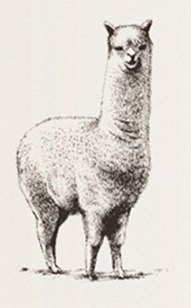
Scientific Name: Huacayo
Population: 3.5-4 million
Habitat: Peru, Chile and Bolivia.
The Huacayo is the predominant species of Alpaca and its fine and voluminous fibre offers the widest variety of natural shades. The Huacayo has a harmonious build which give the impression of strength and grace. This animal constitutes approximately 90% of the Peruvian Alpaca population.
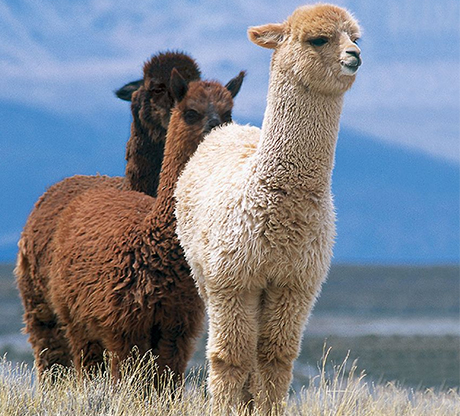
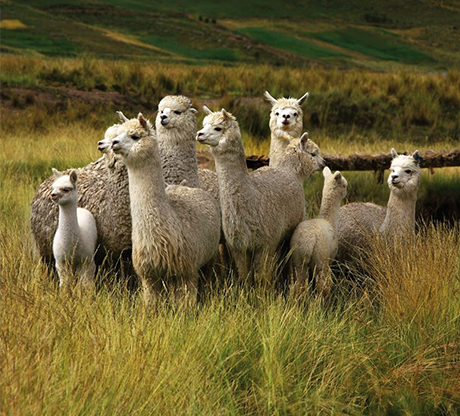
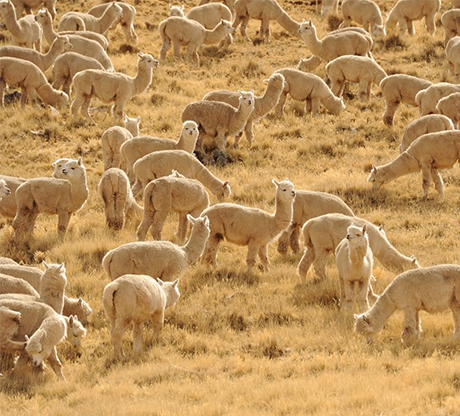
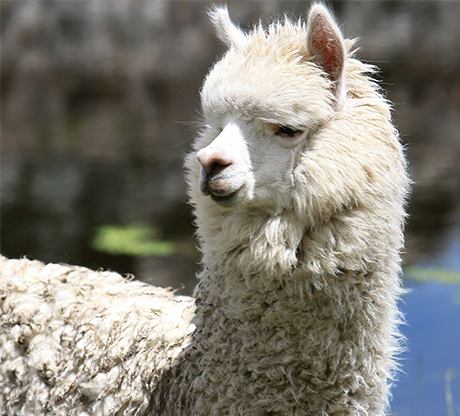


Scientific Name: Suri
Population: 400 000
Habitat: Peru, Chile and Bolivia.
Suri is the less frequent of the Alpaca species. It has a beautiful, long, glossy and silky coat and its fibre in produced in fewer natural shades tan the Huacayo, mostly beige and light browns. The Suri has a distinctive appearance due to its long, curly hair and this animal represents approximately 10% of the Peruvian Alpaca population.
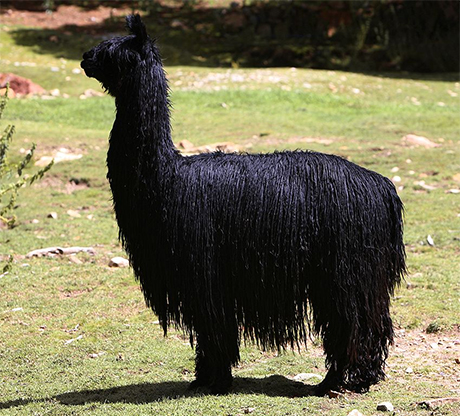

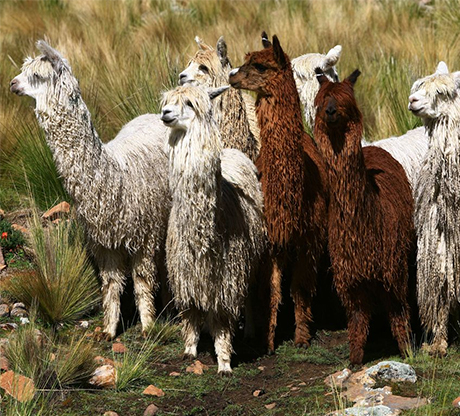


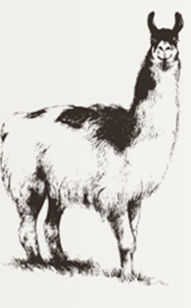
Scientific Name: LLAMA
Population: 1 million(Chaku),1.5million(Qara)
Habitat: Bolivia, Peru, Chile and Argentina.
The Llama (Lama glama) is the biggest and heaviest of the South American camelids. Its long legs and prominent, curved ears are the features which distinguishes it from the other camelids. The Llama has been domesticated and used as beasts of burden for transport since pre-Incan times and even today the llama forms part of many of the diverse customs and religious rituals of the Andean peoples. There are two species of llama: the ‘Qara’ or “without hair” and the ‘Chaku’ or ”woolly”. The hair of the Llama is coarser and rougher t-han that of the Alpaca, but if removed, can be just as soft. Almost 65% of all llamas live in the Bolivian highlands.
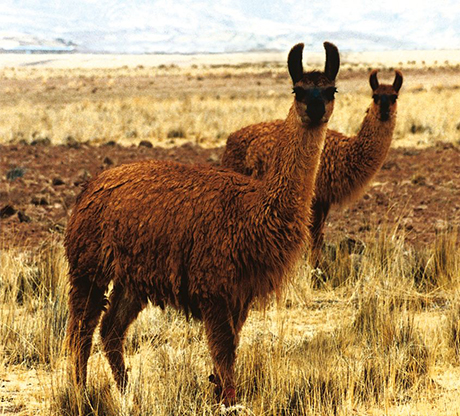

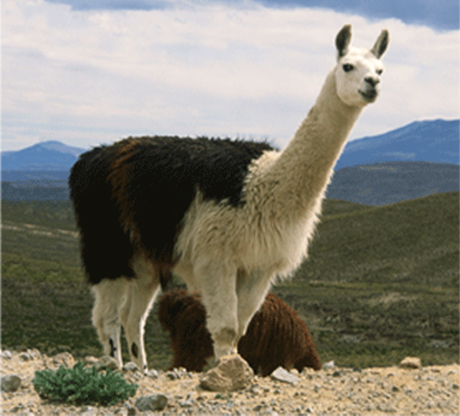

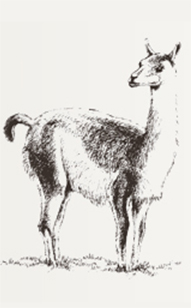
Scientific Name: Guanaco
Population: 600 000
Habitat: Bolivia, Peru, Chile and Argentina.
Just like the Vicuña, the Guanaco is a wild camelid that lives in small groups of females, usually dominated by a single male. The fibreof the Guanaco possesses qualities which, to the touch, demonstrate its high quality. Another notable characteristic is the reddish tone of its fibre. The guanaco is the only South American camelid which can adapt easily to different environments. It is able to live at sea level or at high altitudes as much as 4,600 metres above sea level.
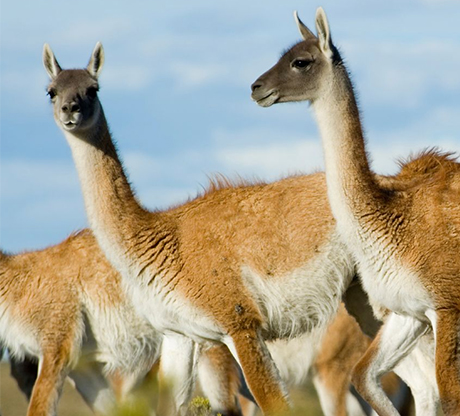
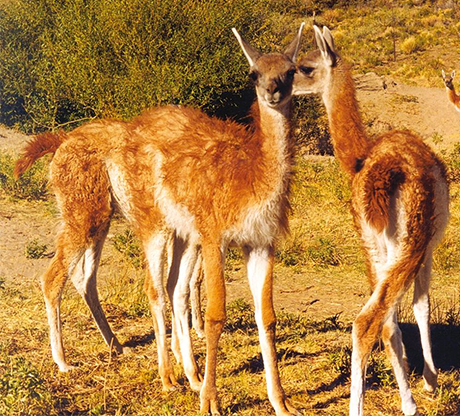

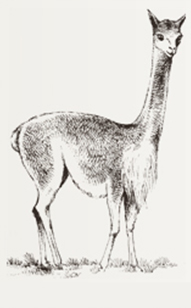
Scientific Name: Vicuna
Population: 150 000
Habitat: Bolivia, Peru, Chile and Argentina.
The vicuña is the smallest of the South American camelids, with a shoulder height of approximately 90 cm and a weight of around 50 Kgs. There are approximately 150,000 Vicuñas in South America, the majority of which live in Peru, with a smaller number in Bolivia, Chile and Argentina. The Vicuña is covered with an extraordinarily smooth, shiny coat. The annual production of fibre sheared from Vicuña is approximately 200 grs. per animal. Its hair is considered to be the finest animal fibre in the world and in the 60’s the animal was in danger of extinction. However, thanks to various Peruvian conservation programmes, the vicuña is out of danger.
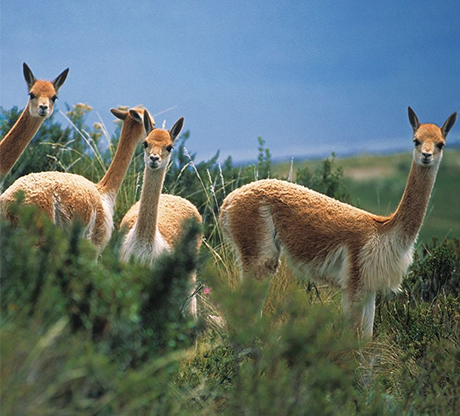
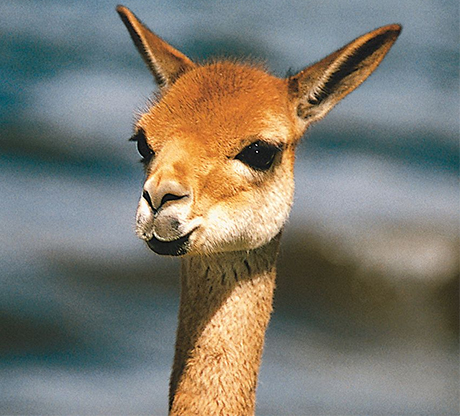

Copyright © 2020 AIT